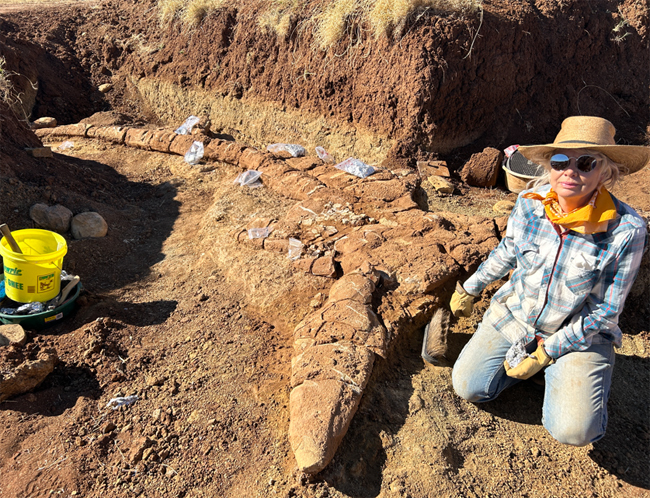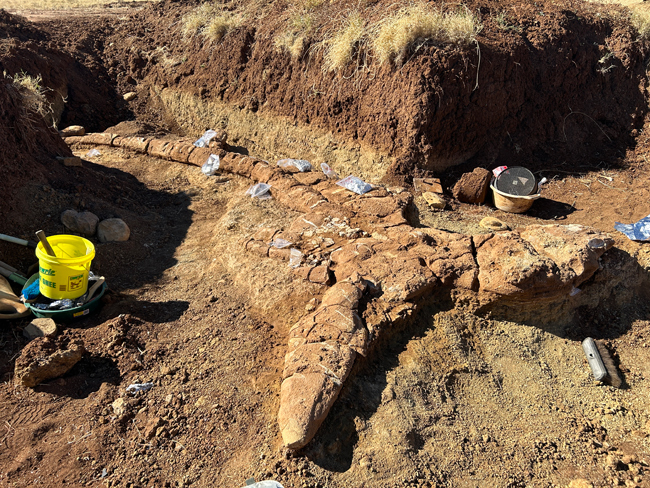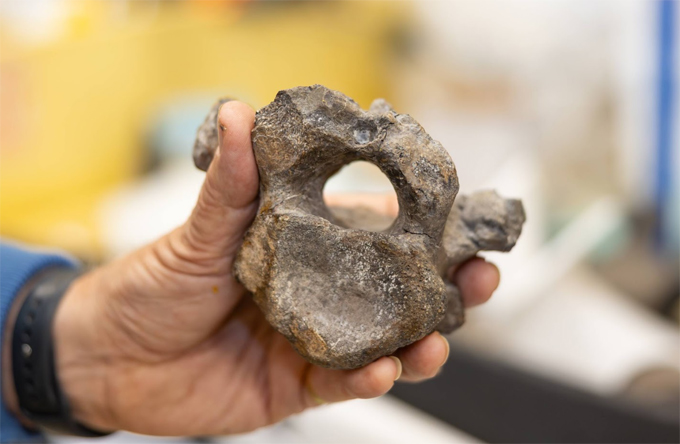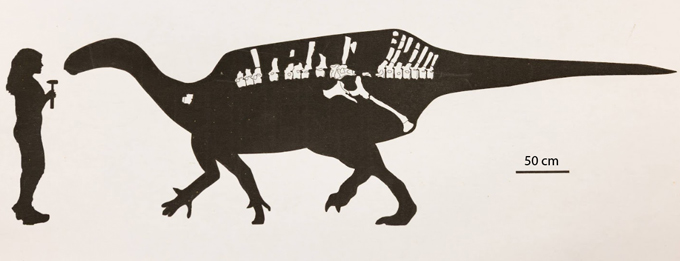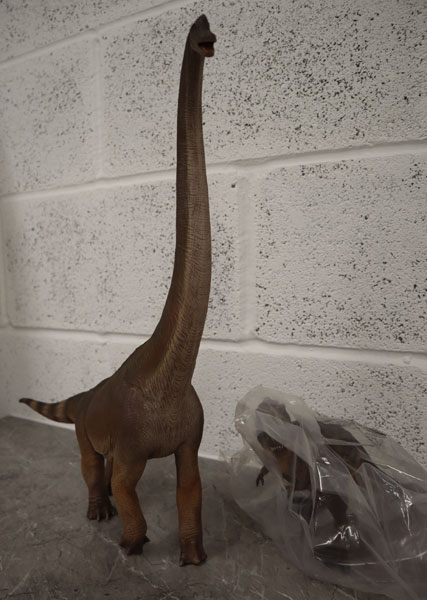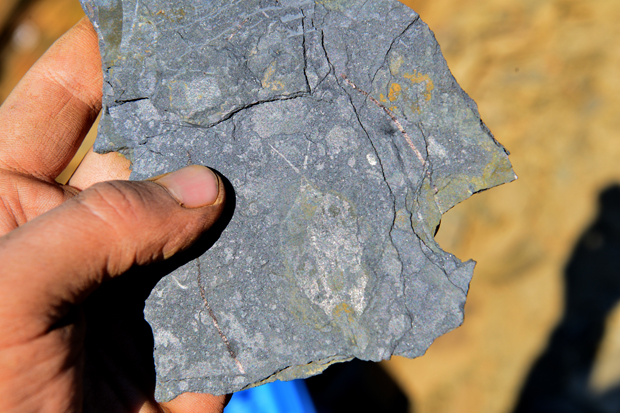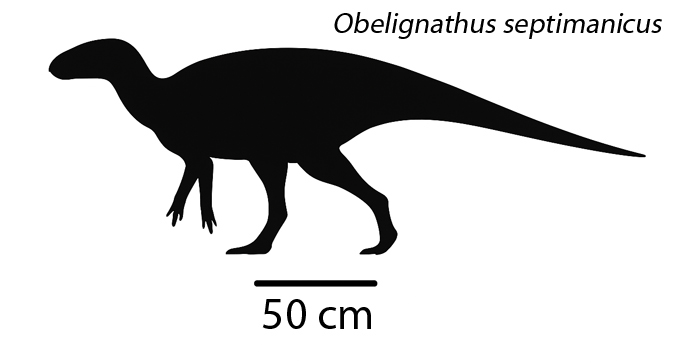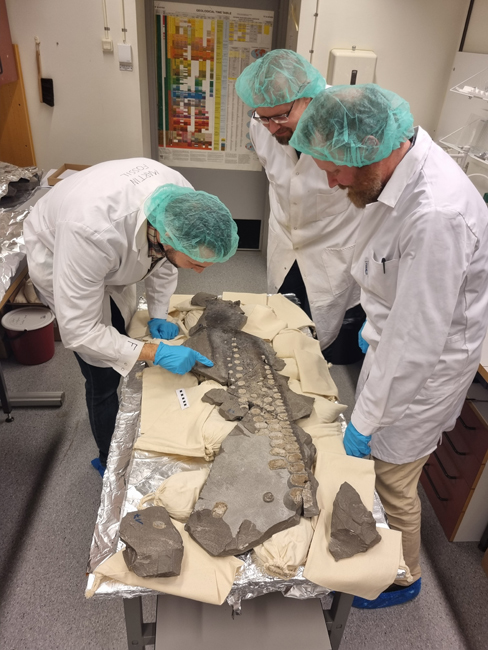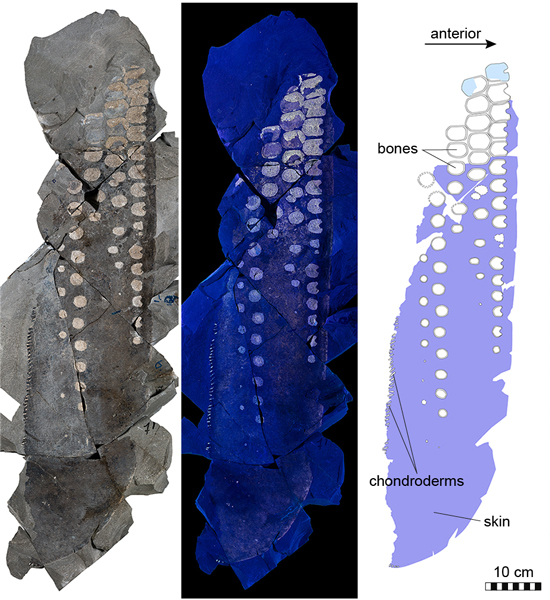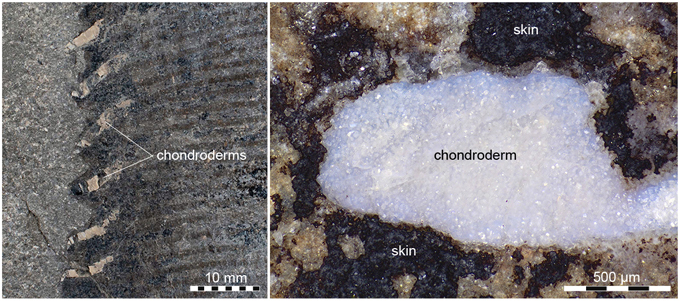Articles, features and information which have slightly more scientific content with an emphasis on palaeontology, such as updates on academic papers, published papers etc.
Extreme Armour in the World’s Oldest Ankylosaur
One of the world’s most unusual dinosaurs is even stranger than first thought. Newly published research in the journal “Nature” confirms that the Moroccan armoured dinosaur Spicomellus afer is definitely an ankylosaur. In addition, to the extremely spiky appearance, it probably had a tail weapon. The evolution of a tail weapon predates this feature in any other known ankylosaur by more than thirty million years. Furthermore, Spicomellus had a unique bony collar ringed with metre-long spikes sticking out from either side of its neck.
It has been nicknamed the “punk rock dinosaur”.
Picture credit: Matthew Dempsey
This dinosaur was formally named and described in 2021 (Maidment et al). The initial description was made based on a single rib bone. The rib had spikes fused to it, a unique feature, not seen in any other animal. However, the “T-shaped” cross section of the rib permitted the scientists to confidently assign this fossil to an ankylosaur. Named Spicomellus afer, it represents Africa’s first known ankylosaur and the earliest representative of this iconic dinosaur clade (Ankylosauria).
To read Everything Dinosaur’s blog post from 2021 announcing the discovery of Africa’s first ankylosaur: The Earliest Ankylosaur and Africa’s First – Spicomellus.
The Remarkable Early Ankylosaur Spicomellus afer
The fossils are more than 165 million years old. This armoured dinosaur lived during the Middle Jurassic, near what is now the Moroccan town of Boulemane. Further fossil discoveries have enabled the research team to learn more about this remarkable armoured dinosaur. For example, they now know that Spicomellus had bony spikes fused onto and projecting from all of its ribs, a feature not seen in any other vertebrate species living or extinct. It had long spikes, measuring eighty-seven centimetres in length, which the researchers believe would have been even longer in real life. These spikes emerged from a bony collar that sat around the reptile’s neck.

A fossil rib showing the spikes fused to it, a unique feature not seen in any other animal. Picture credit: The Trustees of the Natural History Museum, London.
Picture credit: The Trustees of the Natural History Museum, London
Professor Susannah Maidment of Natural History Museum, London, and the University of Birmingham, who co-led the team of researchers commented:
“To find such elaborate armour in an early ankylosaur changes our understanding of how these dinosaurs evolved. It shows just how significant Africa’s dinosaurs are, and how important it is to improve our understanding of them.”
Elaborate Dermal Armour
Ankylosaurs are best known from Late Cretaceous Northern Hemisphere ecosystems. For instance, Ankylosaurus and Euoplocephalus are known from Upper Cretaceous rocks in the northern United States and Canada. Ziapelta is known from fossils found in New Mexico, whereas Saichania, Pinacosaurus and Tarchia are known from Upper Cretaceous rocks in Asia.

“Sede” the Ankylosaurus dinosaur model. The authors of the Spicomellus study postulate that with the emergence of larger predators this could have resulted in ankylosaur armour becoming simpler and more defensive. Picture credit: Everything Dinosaur.
Picture credit: Everything Dinosaur
The picture (above) shows a model of the Late Cretaceous ankylosaur Ankylosaurus magniventris. The figure is from the Chinese manufacturer PNSO.
To view the range of PNSO models and figures in stock: PNSO Age of Dinosaurs Models.
The researchers postulate that the unique, elaborate spines and spikes of Spicomellus may have functioned for display as well as defence. Later ankylosaurs had simpler armour with less extravagant osteoderms. This might indicate a shift towards a primarily defensive function, perhaps in response to increased predation pressures or a switch to combative courtship displays.
Professor Maidment added:
“Spicomellus had a diversity of plates and spikes extending from all over its body, including metre-long neck spikes, huge upwards-projecting spikes over the hips, and a whole range of long, blade-like spikes, pieces of armour made up of two long spikes, and plates down the shoulder. We’ve never seen anything like this in any animal before. It’s particularly strange as this is the oldest known ankylosaur, so we might expect that a later species might have inherited similar features, but they haven’t.”

Professor Susannah Maidment of the Natural History Museum holding a rib with fused spikes. Picture credit: The Trustees of the Natural History Museum, London.
Picture credit: The Trustees of the Natural History Museum, London
Was There a Large Theropod in the Ecosystem?
There is another potential explanation for the remarkable armour associated with Spicomellus afer. Could it have shared its environment with a large predator such as a theropod dinosaur? There is certainly evidence to suggest that by the Middle Jurassic formidable tetanuran theropods were present in many ecosystems.
Co-author of the study, Professor Richard Butler (University of Birmingham) stated:
“Seeing and studying the Spicomellus fossils for the first time was spine-tingling. We just couldn’t believe how weird it was and how unlike any other dinosaur, or indeed any other animal we know of alive or extinct. It turns much of what we thought we knew about ankylosaurs and their evolution on its head and demonstrates just how much there still is to learn about dinosaurs”.

Professor Susannah Maidment of the London Natural History Museum and Professor Richard Butler (University of Birmingham) examine the fossil remains along with fellow researchers. Picture credit: The Trustees of the Natural History Museum, London.
Picture credit: The Trustees of the Natural History Museum, London
Did Spicomellus afer Have a Tail Club?
One feature of early ankylosaurs that may have survived, however, is their tail weaponry. While the end of Spicomellus’ tail has not be found, the caudal vertebrae that do survive suggest that it had a club or a similar tail weapon. Some of these tail vertebrae are fused together. They form a structure referred to as a “handle”. This feature has only been found in ankylosaurs that possessed a tail club. If Spicomellus did have a tail club, it overturns current understanding regarding tail club evolution in the Ankylosauria. These structures were previously thought to have first evolved in the Early Cretaceous.
The authors believe that the combination of a tail weapon and an armoured shield that protected the hips suggest that many of the ankylosaurs’ key adaptations already existed by the time of Spicomellus.

Spicomellus fossil material. This dinosaur was originally described in 2021, however, more fossils were excavated in 2023 providing the research team with further information about the bizarre anatomy of Spicomellus. Picture credit: The Trustees of the Natural History Museum, London.
Picture credit: The Trustees of the Natural History Museum, London
Improving Our Understanding of the Geographic Distribution of Armoured Dinosaurs
Finding more fossils of Spicomellus confirms its ankylosaurian affinities. In addition, it helps to deepen our understanding of the geographic distribution of armoured dinosaurs. It also helps to spark public imagination in the Dinosauria as we learn more about the baffling characteristics of species like Spicomellus.
Professor Driss Ouarhache, lead of the Moroccan team from the Université Sidi Mohamed Ben Abdellah who co-developed the research, commented:
“This study is helping to drive forward Moroccan science. We’ve never seen dinosaurs like this before, and there’s still a lot more this region has to offer.”
The Spicomellus afer fossils that form the basis of this study were cleaned and prepared at the Department of Geology of the Dhar El Mahraz Faculty of Sciences in Fez, Morocco, using scientific equipment provided by the University of Birmingham’s Research England International Strategy and Partnership Fund. The fossils are now catalogued and stored on this site. Perhaps, they will be put on display so that the public will have the opportunity to view these amazing fossils.
Everything Dinosaur acknowledges the assistance of a media release from the University of Birmingham in the compilation of this article.
In addition, Everything Dinosaur acknowledges the assistance of the London Natural History Museum for the use of their images.
The scientific paper: “Extreme armour in the world’s oldest ankylosaur” by Susannah C. R. Maidment, Driss Ouarhache, Kawtar Ech-charay, Ahmed Oussou, Khadija Boumir, Abdessalam El Khanchoufi, Alison Park, Luke E. Meade, D. Cary Woodruff, Simon Wills, Mike Smith, Paul M. Barrett and Richard J. Butler published in the journal Nature.
The award-winning Everything Dinosaur website: Everything Dinosaur.




